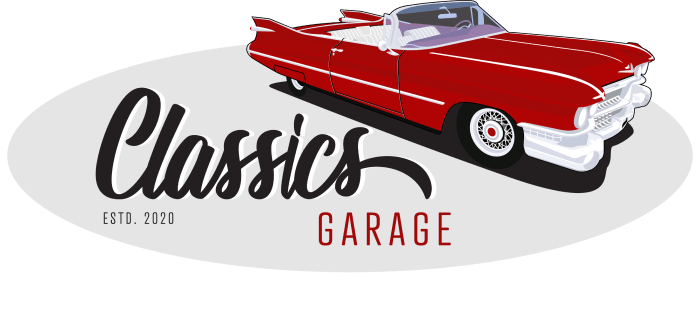While the auto giant has manufactured more than its fair share of notable trucks, the Ford Maverick has a surprising history that many are unaware of.
Americans sure do love their pickup trucks, but the attraction goes far beyond the aesthetics. In fact, their history goes all the way back to the early 1800’s, when many Americans were farmers. During this era, the dream was simple enough – land that was so big and so rich with fertile soil that every family could have their own farm. However, it takes a lot of hard work to produce crops on acreage of this scale, and pickup trucks were soon invented to help farmers bear the load.
Today, pickup trucks are so much more than glorified wheelbarrows. These trucks – or utes as we call them in Australia – don’t come much more revered than the products manufactured by the American automotive giant we’ve come to know and love as Ford. Although their exclusive use on farms might not be as relevant now, one of their most famous pick up trucks has a rich and colourful history unlike any other: the Ford Maverick.
Unpacking A Brief History Of The Ford Maverick
In 2022, the Ford Maverick has been in the headlines as Ford’s latest compact pickup truck, designed to slot in underneath the Ford Ranger in the American market. The Maverick uses the same front wheel drive based unibody platform previously seen on the Ford Escape and Bronco Sport, and also offers a hybrid powertrain as standard, with a conventional turbo engine being an add on option.
However, many people are surprised to learn that this is actually the first Ford Maverick pickup truck ever produced, and that the badge’s origins is actually from a compact two door sedan manufactured in the 1970s.
First introduced in 1969, the original Ford Maverick was introduced to the American marketplace at the highly competitive price point of $1995, or just under $14,000 in today’s dollars. Originally conceived and marketed by Ford as an ‘import fighter’, the end goal was to shift the attention of consumers away from Japanese imports like Datsun and Toyota.
The introduction of the Mustang in 1964 had decimated sales for the company’s existing compact model, the Ford Falcon, and despite receiving a full redesign in 1966, it was still unable to meet the forthcoming United States National Highway Traffic Safety Administration motor vehicle standards, which were set to come into effect in 1970.
As a means to also combat competition from the Chevrolet Nova and Dodge Dart, Ford introduced the Maverick to reclaim their position in the compact car market while still adhering to their legal obligations on the road.
Although a compact car by design, the Ford Maverick featured a muscle car look and feel. With a long hood and fastback roof, it bore a close resemblance to the incredibly popular Mustang, and erased any preconceptions on what many considered a compact car should look like. As such, the Ford Maverick exceeded sales expectations, and soon gave the Mustang a run for its money.
In addition, soaring gas prices and increasing demand for smaller cars resulting from the 1973 oil crisis also caused the Maverick to grow in popularity. Maverick production continued until 1975 with the release of its intended replacement, the Granada, as a more European-style luxury compact.
In its final year, the Maverick remained unchanged until 1977 with the exception of a custom police package. However, the model was not sufficiently upgraded for police work, and sold less than four hundred units.
The Maverick’s place in the North American Ford lineup was essentially taken by the 1978 Fairmont. The Maverick had no significant changes towards the end of its lifespan, since it was originally meant to be replaced in 1975 by the Granada. However, Ford decided to keep selling both lines until the 1978 model year introduction of the Fairmont.
Although the Ford Maverick was only manufactured as a compact car between 1970 and 1977, Ford went on to sell Nissan Patrols under the Ford Maverick badge in Australia and Europe under three different models between 1988 and 2005. Now, Ford has unveiled a third body under the Maverick badge – this time, in the form of a pick up truck.
Like the original sedan, the Maverick pickup is poised to capture the popularity of a larger and more expensive stablemate and do it in an image-conscious segment. While it’s unlikely that this new generation of Mavericks will generate the same type of buzz as the F100s or Ford Rangers, the affordable price point may yet make its mark and surprise us all.
Your Guide To Everything Classic Cars
Finding a fellow vintage auto enthusiast can feel a bit like finding a needle in a haystack, but rest assured that Classic’s Garage understands the thrill more than most. Having spent forty years collecting anything and everything from matchbox cars to hub caps, he’s successfully followed his passion to source, collect and stock beautiful and low mileage classic automobiles from around the world.
Although his passion is for automobiles built before 1978, with a particular love for Buicks, Cadillacs, Lincolns, Oldsmobiles and even Fords, Wayne is just as passionate about the stories of the owners. If it’s even remotely different, rare or just plain unusual, Wayne will overcome the relevant logistical and geographical challenges of bringing the cars to his showroom in Australia.
Classic’s Garage is a showroom conveniently located at Seventeen Mile Rocks, that specialises in the restoration and sales of vintage automobiles. If you’re on the hunt for Brisbane classic cars – quite simply, Wayne is your man. If you would like to arrange a viewing or inspect any other of our classic vehicles, please get in touch with us today.

